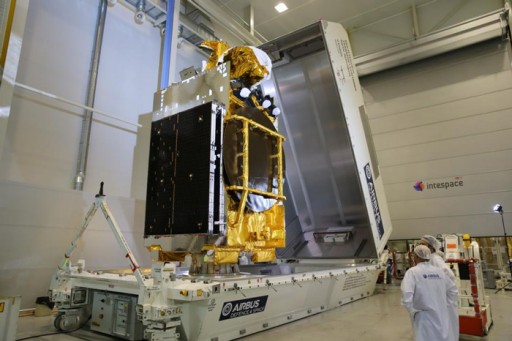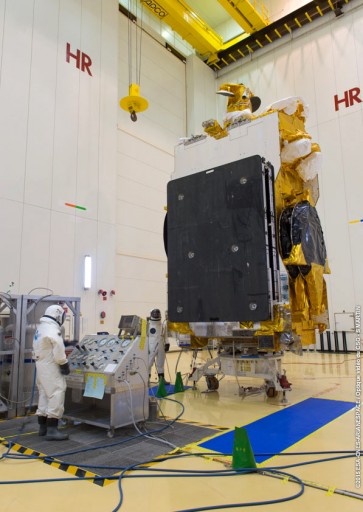Badr 7 Satellite Overview

Badr 7, also known as Arabsat 6B, is a commercial communications satellite built by Airbus Defence and Space and Thales Alenia Space, to be operated by Arabsat to deliver Direct-to-Home Television.
Badr 7 was built by Airbus Defence and Space based on the flight-proven Eurostar-3000 satellite bus. The platform is capable of hosting communications payloads with a total power exceeding 16,000 Watts. The spacecraft platform can support a high degree of customization to be able to support a variety of payloads including commercial communications and military payload packages. Eurostar-3000 made its first launch in 2004.
The Badr 7 satellite has a launch mass of around 6,100 Kilograms. The spacecraft stands 7.5 meters tall and, in orbit, its deployed solar arrays have a span of over 30 meters.
The satellite platform consists of a central cylinder which facilitates the propellant tanks for the bi-propellant propulsion system. The cylinder consists of several segments connected via ring-joints. Internal composite panels are mounted to the cylinder to facilitate the external panels and provide mounting platforms for the various satellite components.

Two deployable solar arrays are used for power generation featuring triple-junction Gallium-Arsenide solar cells. Power is stored in onboard batteries while a Power Conditioning and Distribution Unit regulates the satellite’s power bus and controls the state of charge of the batteries. Badr 7 will generate a total power of 11,500 Watts at the end of its mission.
A dedicated bi-propellant propulsion system will be used for apogee maneuvers and stationkeeping maneuvers in Geostationary Orbit. Eurostar-3000 is three-axis stabilized featuring a state of the art navigation system. The satellite provides precise Earth-pointing capabilities and stationkeeping accuracy is +/-0.05 degrees. E-3000 provides the option of adding an electric propulsion system.
The communications payload of the Badr 7 satellite was built by Thales Alenia Space and is comprised of 27 active Ku-Band transponders plus 24 Ka-Band spotbeams and an additional three Ka-Band transponders for an extension of services when needed. The communications payload covers North and Central Africa and the Middle East.
Badr 7 will be co-located with the rest of the Arabsat Badr constellation to become part of an orbital video hot spot, extending the current capacity for Direct-to-Home television services. Stationed at 26° East in Geostationary Orbit, the Badr 7 satellite will operate for at least 15 years.
